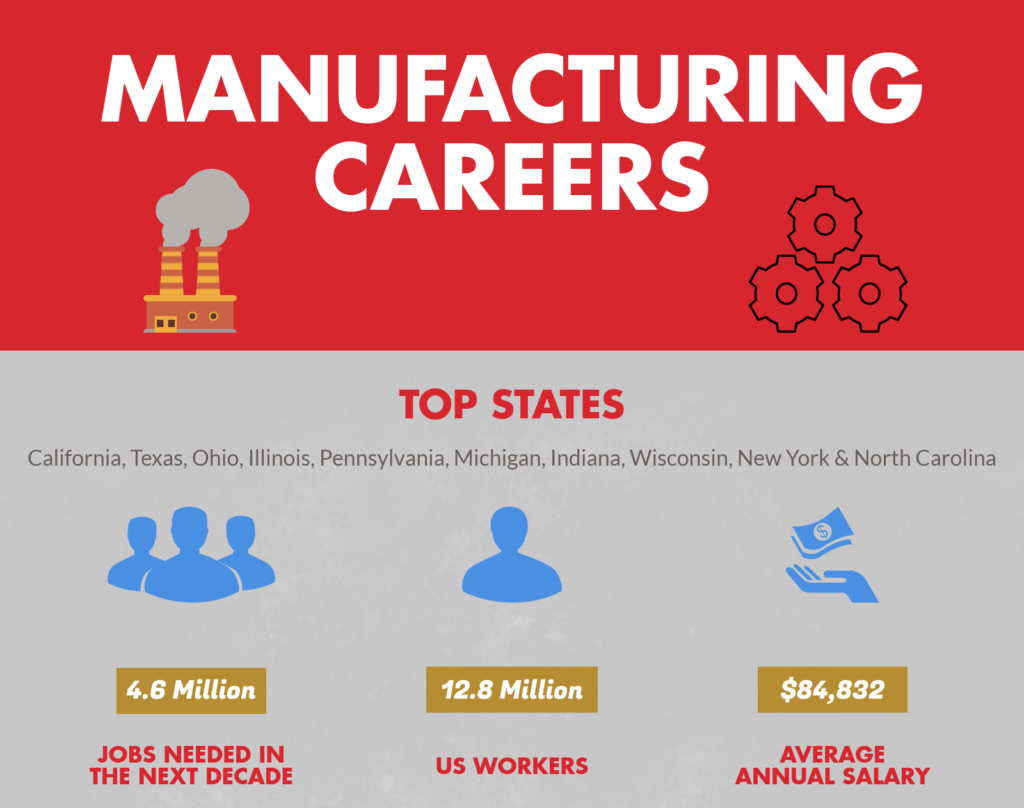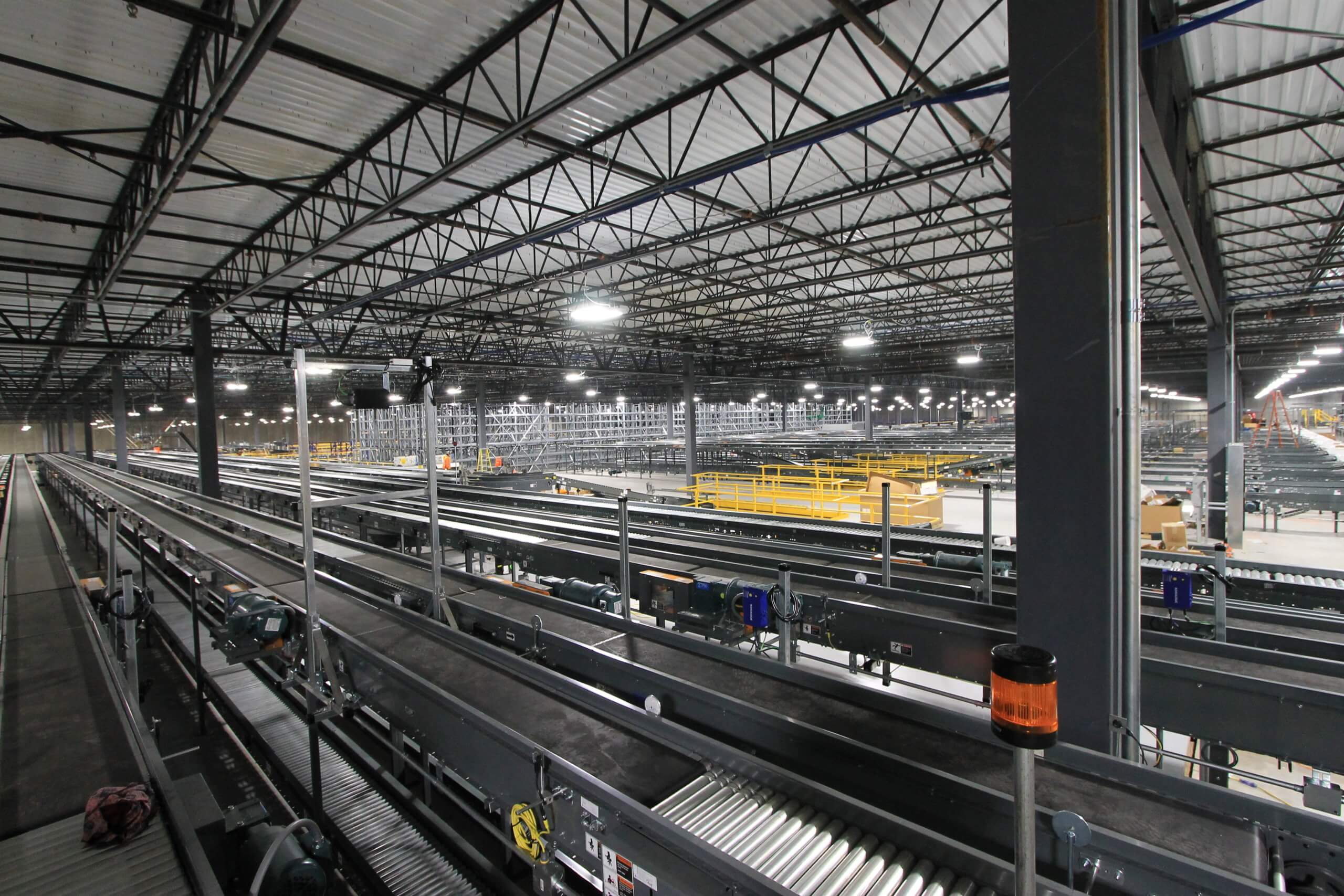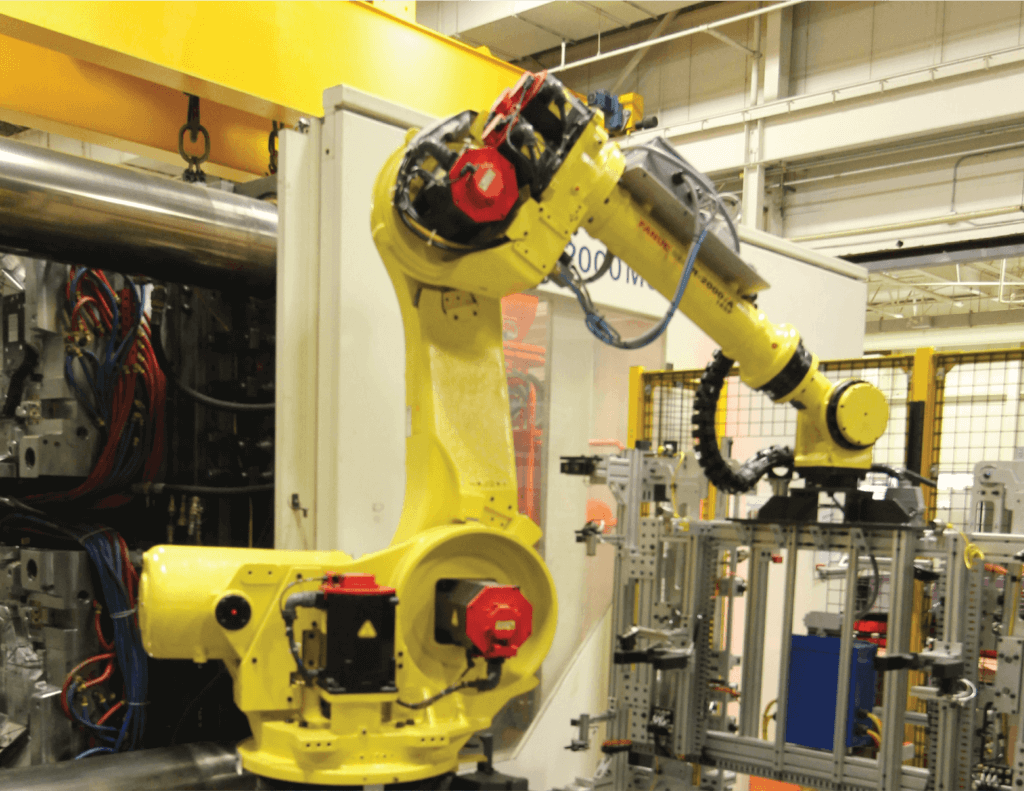Tag: michigan manufacturing
There are currently over 12.82 million manufacturing skilled workers in the United States. Over the next decade, 4.6 million manufacturing jobs will likely be needed, and 2.4 million are expected to go unfilled due to the skills gap. According to a recent report, the lack of qualified talent could take a significant bite out of economic growth, potentially costing as much as $454 billion from manufacturing GDP in 2028 alone. Between now and 2028, a persistent skills shortage could cost $2.5 trillion in reduced output. (Source: Deloitte and The Manufacturing Institute)
The benefits of working in manufacturing are endless. Higher average salary, health benefits, low cost education and training are only a few positives of manufacturing positions. In 2017, the average manufacturing worker in the United States earned $84,832 annually, including pay and benefits. The average worker in all nonfarm industries earned $66,847. Looking specifically at wages, the average manufacturing worker earned more than $27 per hour, according to the latest figures, not including benefits. (Source: Bureau of Economic Analysis and Bureau of Labor Statistics)
Below is a list from the Bureau of Labor Statistics as a
guide to some of the types of jobs that are in manufacturing:
- Assemblers and Fabricators
- Food Processing Operators
- Machinists and Tool and Die
- Metal and Plastic Machine Workers
- Painting and Coating Workers
- Power Plant Operators
- Quality Control
- Stationary Engineers and Boiler Operators
- Water and Wastewater Treatment
- Welders, Cutters, Solderers
- Woodworkers
The Bureau of Labor Statistics describes what these jobs are like, how much education or training is needed and the salary level. It also will tell you what it’s like to work in the occupation, how many positions there are and whether it’s a growing field.

Another benefit of working in manufacturing is eligibility for health insurance. In 2018, 92% of manufacturing employees were eligible for health insurance. This is a significant difference from the average 79% of employees that are eligible for all firms.
With the large amount of benefits and job availability, pursuing a career in manufacturing provides job stability.
Visit our website or call us today to receive your free quote (888) 833-8776.
Subscribe and receive updates via email

Since the late 1800’s, Michigan has been known for manufacturing and innovation. In the early 20th century, the entire future of Michigan’s economy and the future of manufacturing would completely change. In 1913 Henry Ford created the modern-day moving assembly line which took raw materials to a finished product with speed and efficiency. The moving assembly line reduced chassis assembly in one year – from 12.5 hours to only 93 minutes. In 1928 the construction of the Ford River Rouge Plant was completed. It was the largest integrated factory complex in the world, employing 100,000 people. As of November 2018, Michigan employs 623,800 individuals in the manufacturing sector. From automotive, appliances, bioscience, machinery, medical devices, plastics, metals, tool and die, furniture and food processing, Michigan remains in the top 5 manufacturing states in the United States.
Notable facts about the current manufacturing climate in Michigan include:
- Manufacturers contributed $2.18 trillion to the U.S. economy in 2016
- Total manufacturing output in Michigan in 2015 was $92.55 billion
- Michigan manufacturers exported $52.05 billion in goods in 2016
- The average wage and benefits in manufacturing are 27.4% higher than the average of all industries
- Over the past 25 years, U.S.-manufactured goods exports have quadrupled
- Manufacturers pay $19,564 per employee on average to comply with federal regulations, or 95.8% higher than the average cost across all businesses
- According to the Department of Treasury, manufacturing employs over 9% of the total U.S. workforce, yet is responsible for 60% of exports and 69% of R&D spending
- Manufacturers in Michigan account for 19% of the state GDP — sixth highest in the nation
- Michigan’s 9.3% drop in unemployment since June 2009 is the largest improvement of any state
- Employment in Michigan’s manufacturing sector has increased by more than 175,600 jobs since June 2009 — an increase of 40.6 percent in eight years
- Michigan accounts for 22% of all U.S. auto-related jobs
- For every one worker in manufacturing, there are another four employees hired elsewhere
The future of manufacturing in Michigan is not going to slow down any time soon.
- Over the next decade, nearly 3½ million manufacturing jobs will likely be needed, and 2 million are expected to go unfilled due to the skills gap
- Engineering is just one example of the high skill level required for many advanced manufacturing careers — 40% of all engineers in Michigan are employed by a manufacturer

- Women represent approximately 25% of manufacturers in Michigan
From Henry Ford’s vision of the assembly line to robots and artificial intelligence, Michigan is a hub of innovative manufacturing.
Lee Contracting’s in-house trades can service your manufacturing needs. Our skilled tradesmen are experienced in plant optimization to reduce downtime. No matter what your facility manufacturers, we can get the job done.
Call us today to receive your free quote (888) 833-8776 or visit our website.
*Statistics about Michigan Manufacturing come from the Michigan Manufacturers Association, www.mimfg.org.


